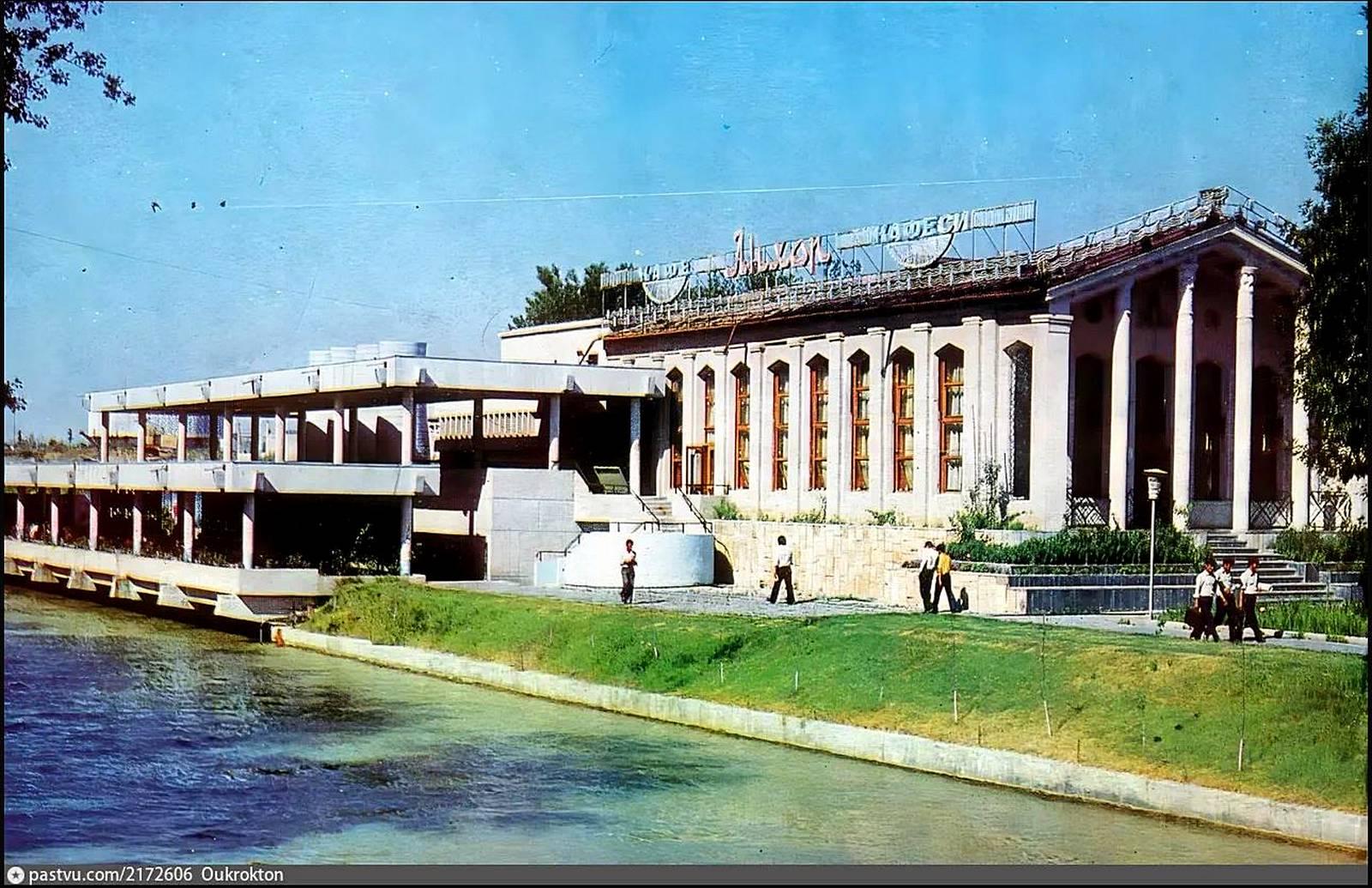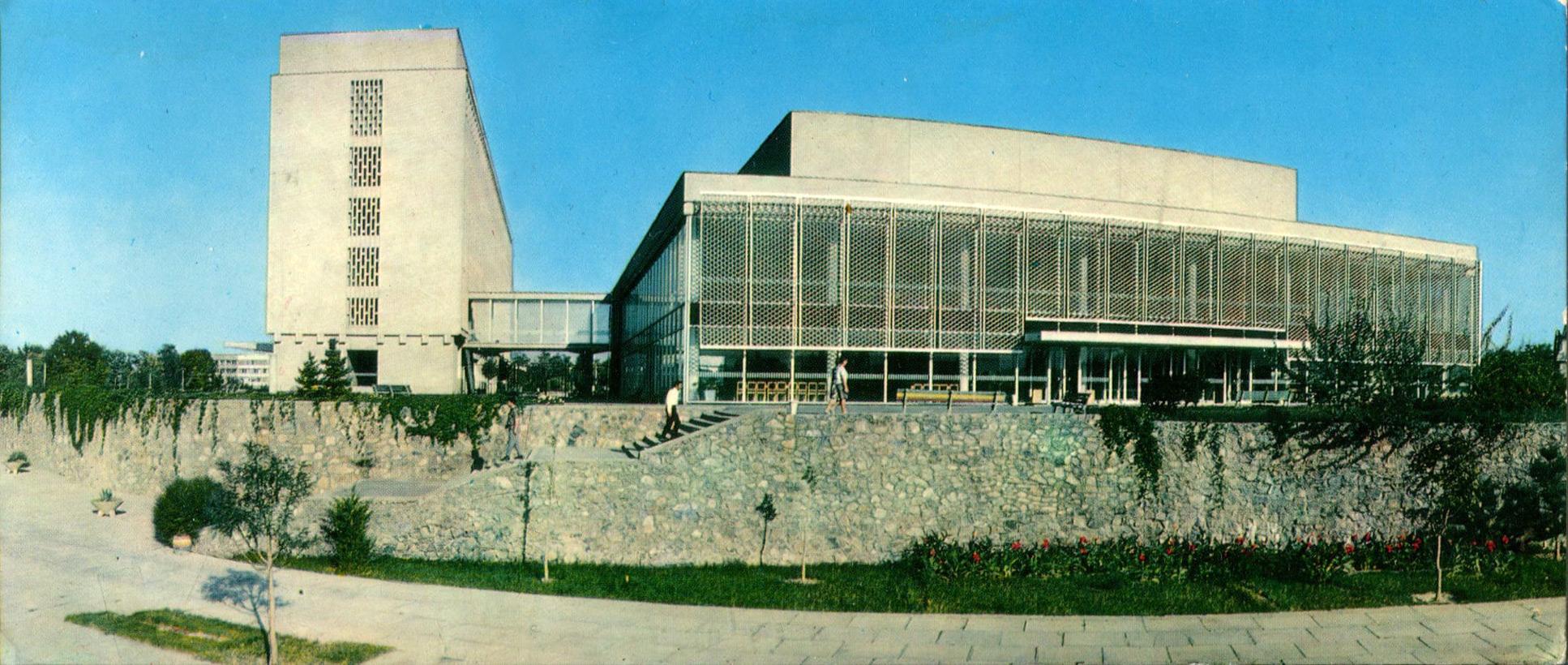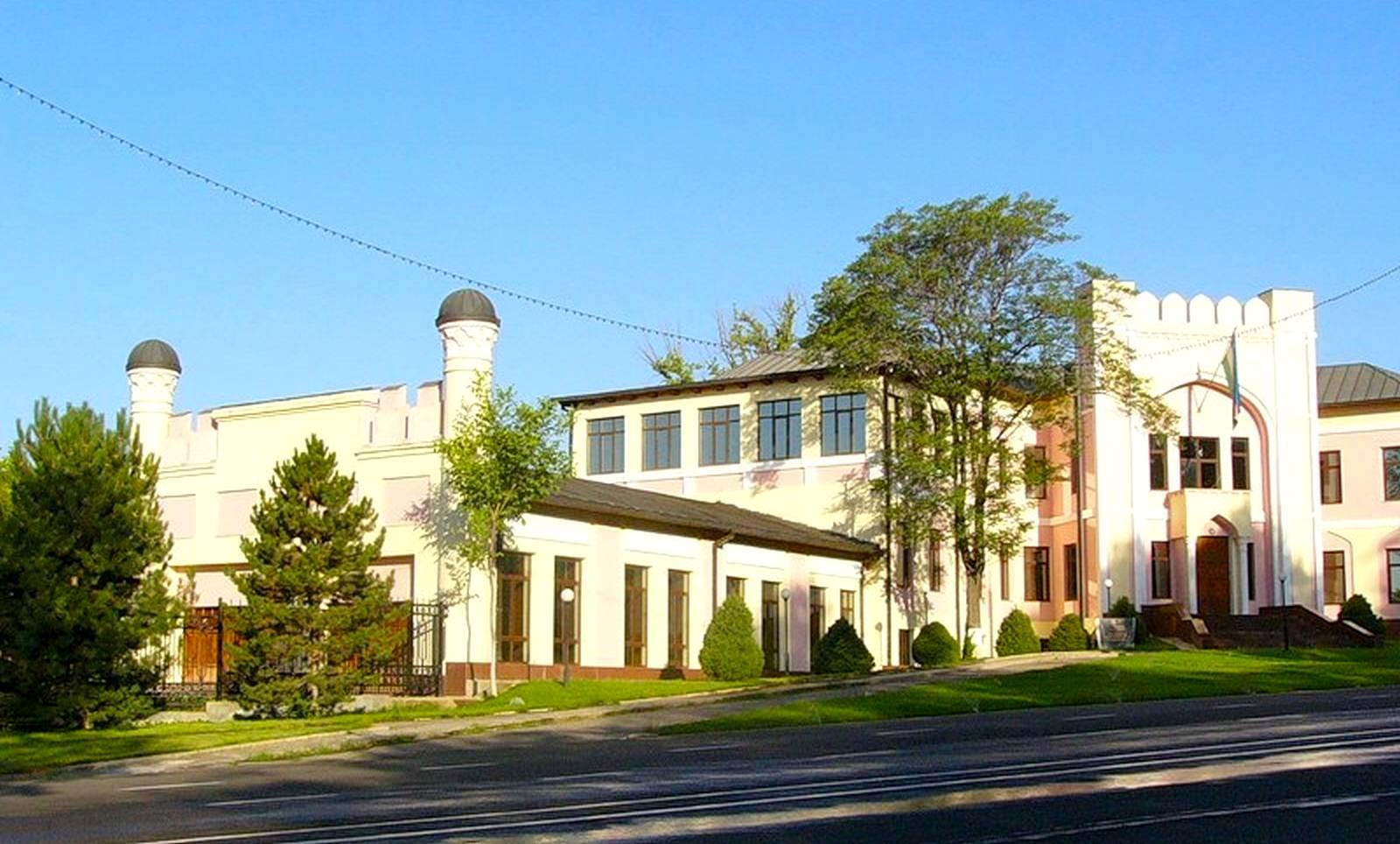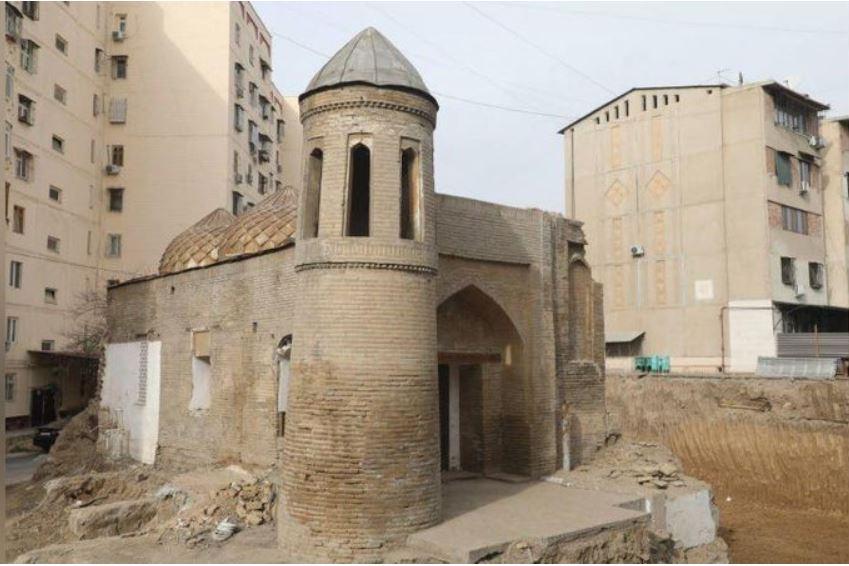In the mid-19th century, a wealthy
Tatar entrepreneur named Sharafbay (Sharafiddin Bay) built a mosque, which
survives today in a reduced form: when Farabi Street was widened in the 1970s,
the minaret and part of the fence were demolished.
Currently, the building remains,
complete with a dome, plastered interior, and an aiwan with a painted ceiling
on carved columns and carved ornamentation on the walls.
The building houses the Kushtut
Gallery, featuring exhibits on calligraphy and old handwritten manuscripts.
During the reconstruction of the
aiwan, part of the ceiling and columns were left in their original form.

The teahouse on the Anhor canal bank was built in 1956 according to the design of architect V. M. D...

The former Central Committee of the Communist Party of Uzbekistan building was constructed in 1964....

Tashkent residents are familiar with the beautiful building of unusual architecture featuring Easte...

The Baland Mosque was built in 1857. "Baland" means "high," and the mosque received its name from t...